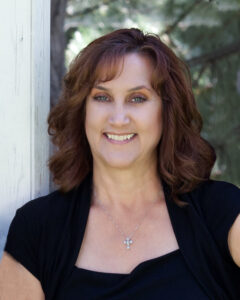
In the last post, we talked about the damage that rejection and criticism do to a writer’s spirit. Most writers are sensitive, quiet people who are unsure about their calling. So how do you weather the endless rejections from publishers and critics?
First, remember the rejection that Jesus received. Imagine what would have happened if He gave up when He found His people accusing Him of blasphemy. He persevered. If Jesus hadn’t come into the world, we would not know Christianity and the peace and salvation it brings. We would not have the eternal life He obtained for us with His very life. His suffering, not only verbal rejection but physical pain and dismissal by the same people Jesus had come to save, must have pierced His heart.
I often think of the garden where He begged to have this cup taken away from Him. It was not. His closest friends deserted Him. One betrayed Him. Another denied Him. He had a mission, and while the human in him sweated blood with the pain He faced, Jesus didn’t let His own feelings stop what He was born to do.
Where is the Christ in you?
Is a letter of rejection enough for you to give up the gift that God has given you? I hope not. I always love the thought that Jesus would have come and died on the cross just to save one soul. Wow! A soul must be worth a lot. What would you do if you knew just one person was saved by reading one of your works? Wouldn’t it be worth all the work you put in? If saving one soul was good enough for Jesus, why wouldn’t it be good enough for you?
Christ lives in you, in your soul, in your spirit, and your gift of writing. Are you ready to cast Him out? Can’t you imagine meeting Him on your last day and Him showing you the soul that came back to Him because of your gift of writing? Imagine meeting that person who now has eternal life.
Not only that, but faith has a ripple effect. Imagine the people his or her new faith saved. Are you ready to let a little rejection deprive you of that? It is said that people found belief when St. Peter’s shadow passed over them. Can your work and the courage it takes to write from your spirit be that shadow that passes over someone?
The opposite of fear is courage. Don’t let a few rejections discourage you.
How do you make the change?
One of the first things is to change the tapes of doubt that you repeatedly play in your head. It isn’t important what other people say. What is important is what you say to yourself. Do you wake up each morning and tell yourself that you are a writer? What do you say when people ask you what you do or what your work is?
I used to say that I was a retired nurse. It was easy. There were no questions about that answer. I didn’t realize that I was also telling myself that I wasn’t a writer every time I gave that timid answer. After all, if I told others that I was a writer, the inevitable next question would be: “Oh, have you been published?” Somehow, I thought that mattered. I didn’t think my little articles were enough to qualify me as a real writer.
Every time I denied who I was, I was like Peter denying Christ. I was not only lying to the person asking; I was lying to myself, and playing that tape over and over destroyed whatever confidence I had. So what do you say when someone asks you what you do or who you are? From now on, I want you to tell them that you are a writer even if you have another job to pay the bills, even if you haven’t published yet.
You are a writer if you write. And every time you say it out loud, you are telling yourself who you are. Yes. It is that important. Destroy that negative tape that plays in your head. Announce to the world, and mainly yourself, who you are.
Now that you know you are a writer, what is the next step?
Set up an office for your work. It is your work, after all. Don’t you need a quiet place to write? Don’t you deserve it? When I set up my office, it made my writing real to me. I was telling myself that I was a real writer and deserved to have an office. I took a desk from my childhood room and polished it up. I printed the two articles that I had published, framed them, and hung them on the wall. I got a used but nice leather desk chair and set up my office in my house’s loft.
Every day, when I looked at my little spot, I knew my calling was waiting for me. As time when on, I took photos of the covers of my self-published novels. I framed them and put them on a shelf above my desk. Whenever I got an award, I framed it and added it to my office wall. Just looking at my work as it built up over the years convinced me that I was a writer. Now that I write for children, I always frame the letters or touching reviews I receive from them.
I know who I am. Do you? Next post, let’s talk about what to do with those rejection letters.
Copyright 2021 Karen Kelly Boyce
 A romance? A mystery? An adventure? What is this novel? Where You Lead is all of these things wrapped in colorful history and tied together by the outstanding talent of Leslea Wahl. What a gift I received in my mailbox. It kept me away from my housework and laundry. It kept me awake past my bedtime. And I loved every minute of it because I loved this teen novel.
A romance? A mystery? An adventure? What is this novel? Where You Lead is all of these things wrapped in colorful history and tied together by the outstanding talent of Leslea Wahl. What a gift I received in my mailbox. It kept me away from my housework and laundry. It kept me awake past my bedtime. And I loved every minute of it because I loved this teen novel.  I highly recommend this novel. It is not only entertaining for teenagers but adults also. Where You Lead has won the
I highly recommend this novel. It is not only entertaining for teenagers but adults also. Where You Lead has won the 







